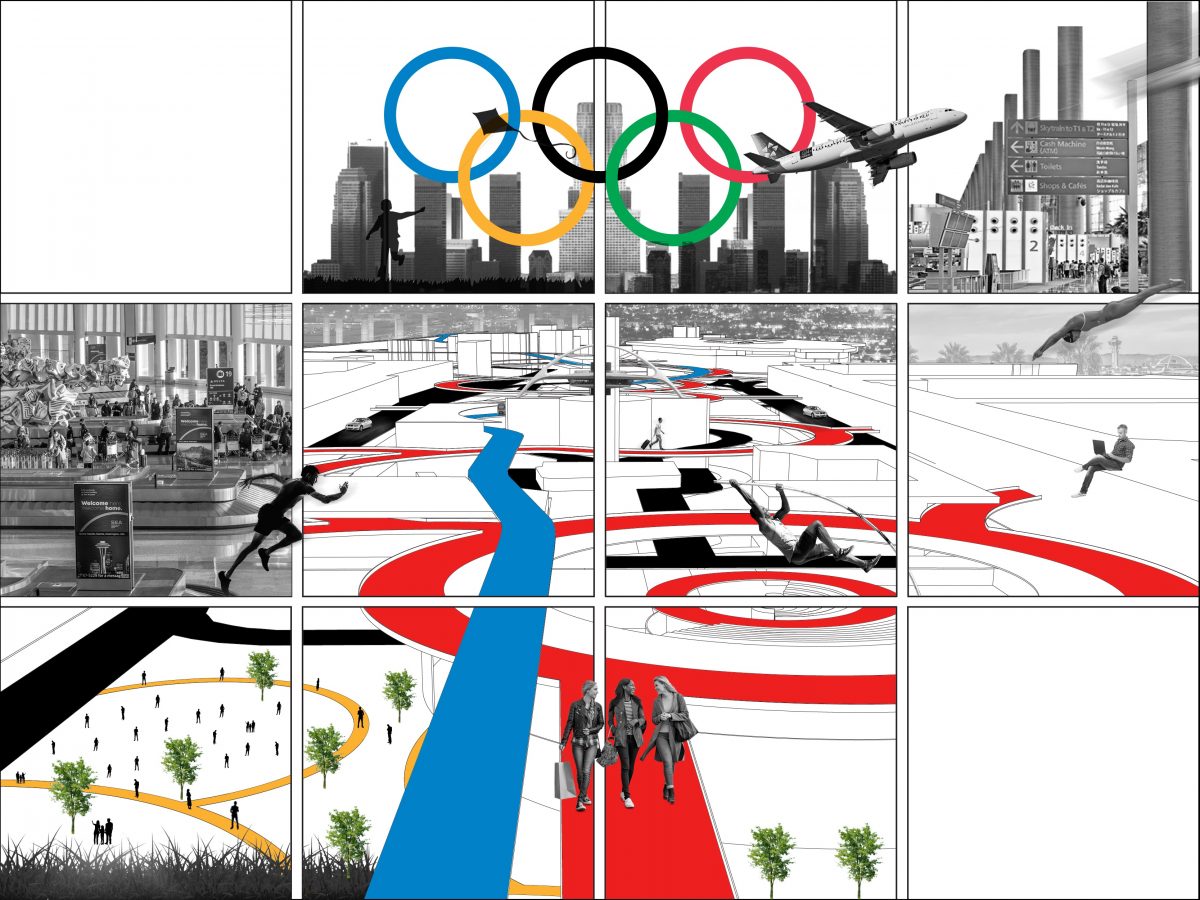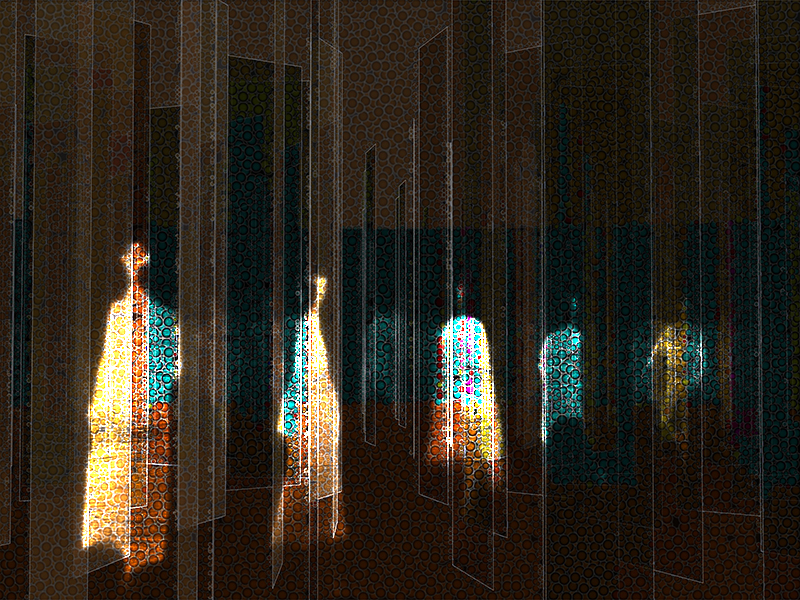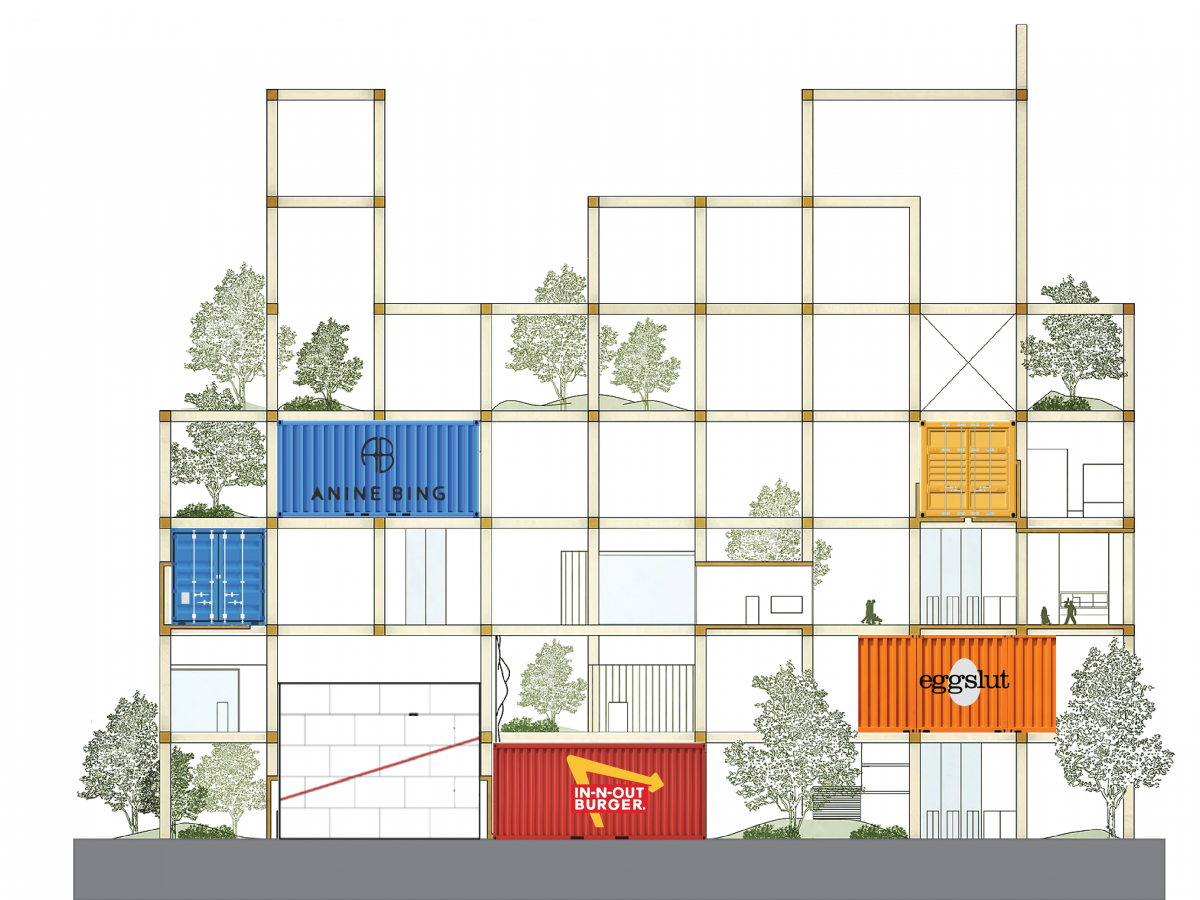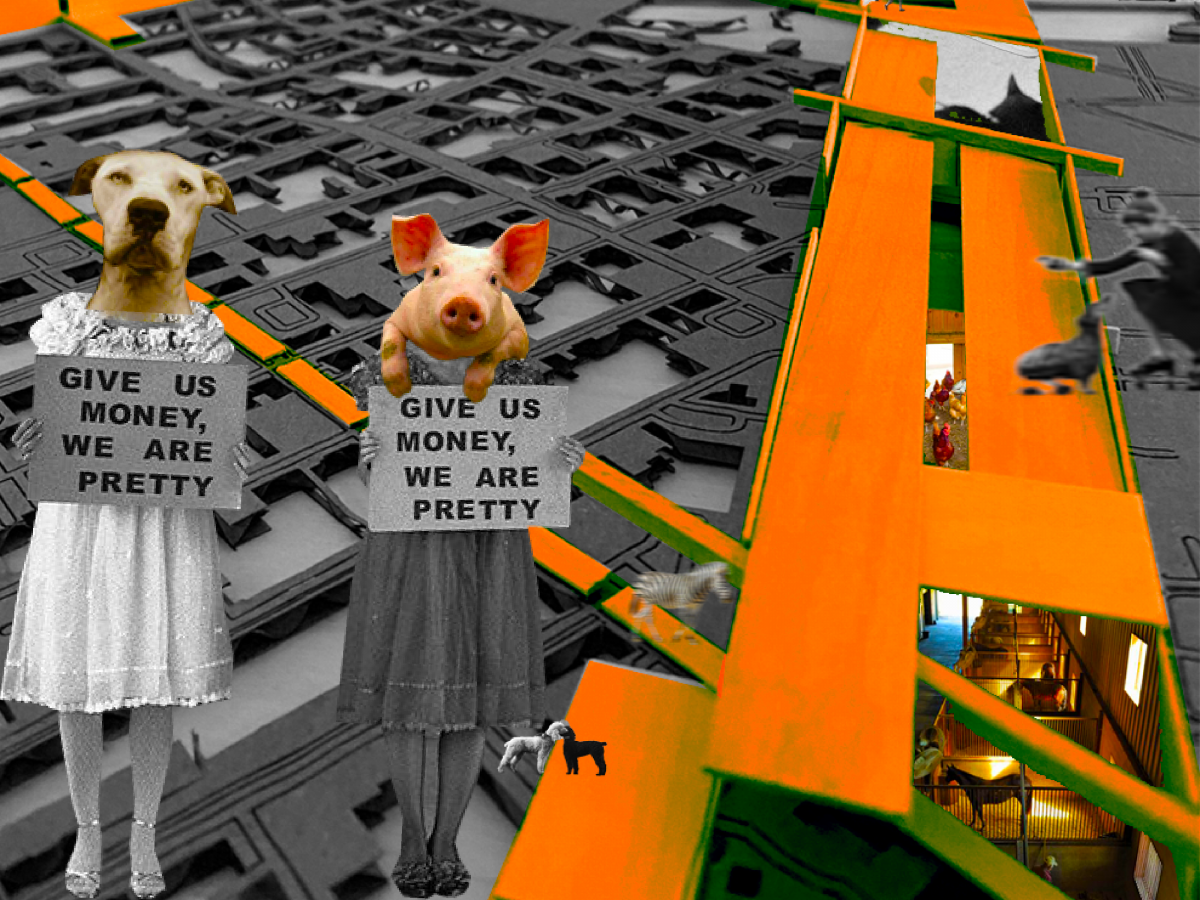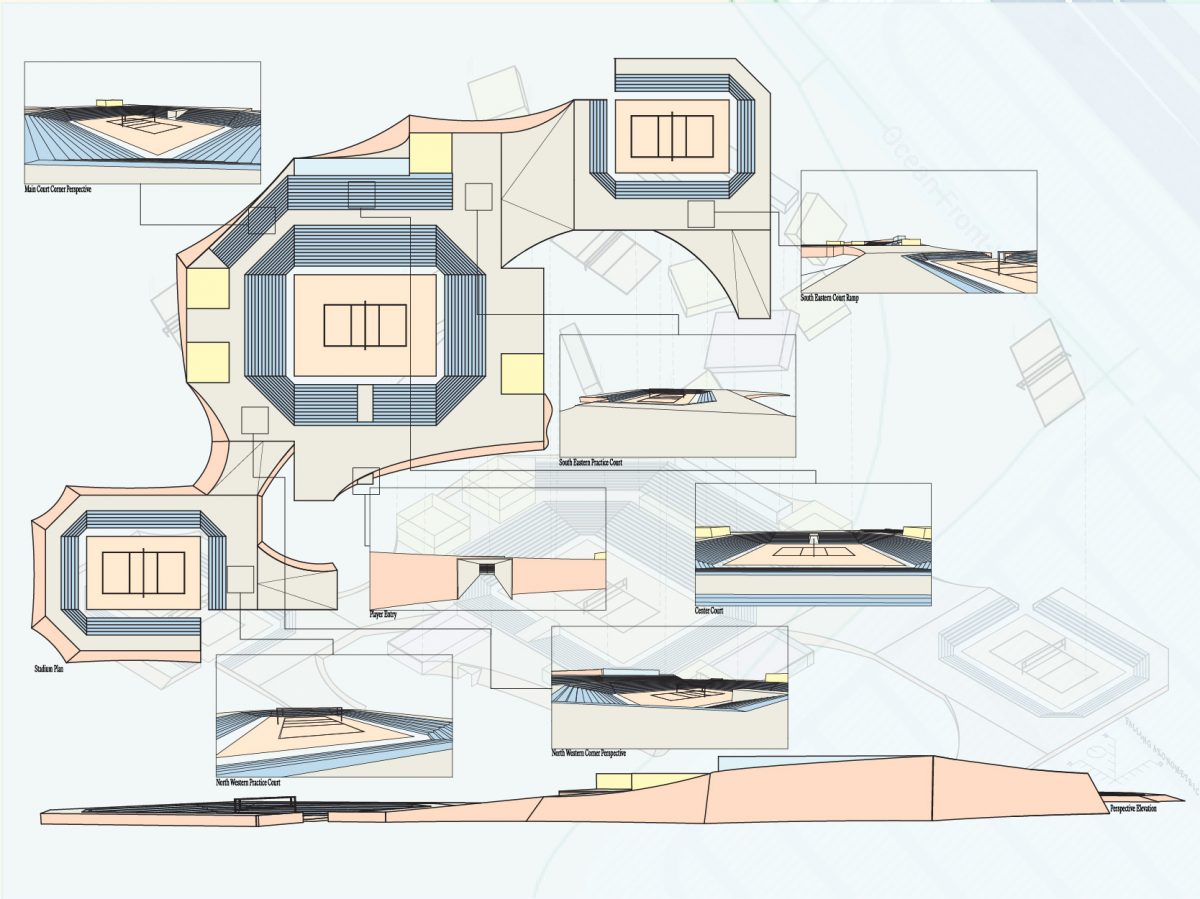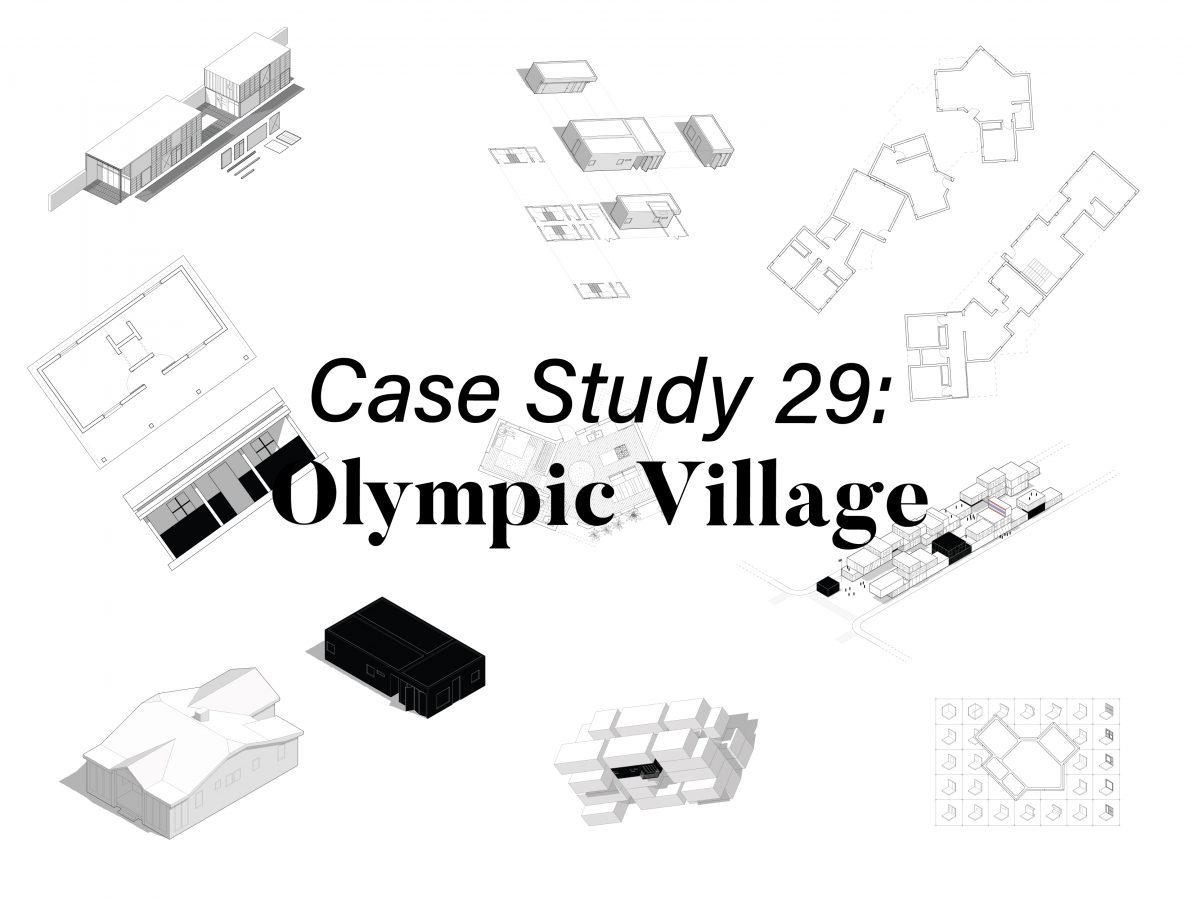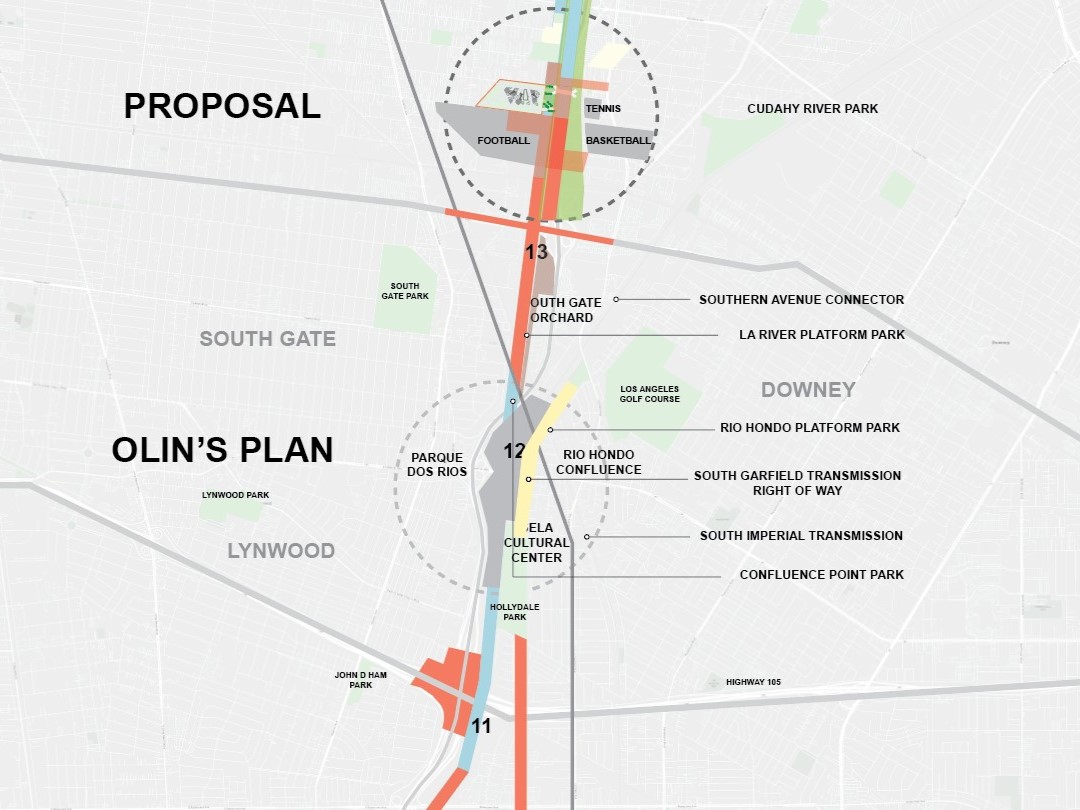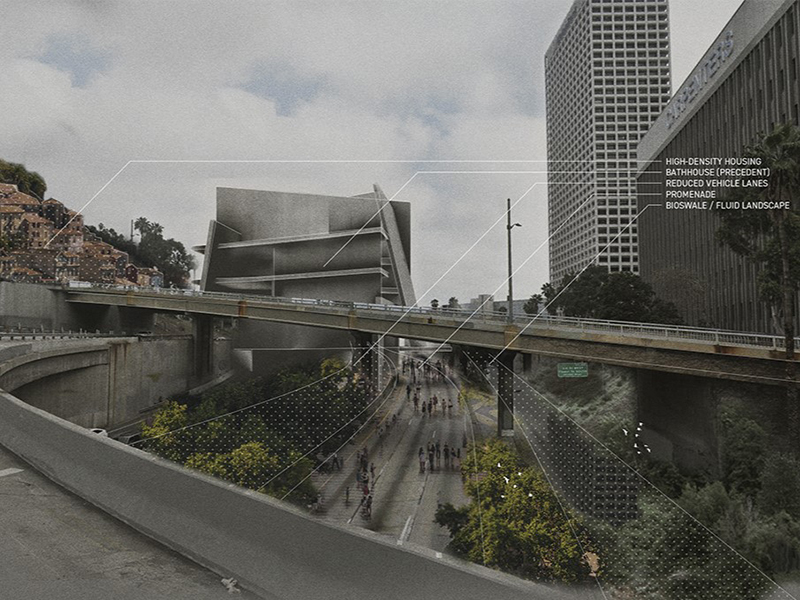Incorporating spatial and temporal dimensions into architectural design has transformative potential. It offers new perspectives on how our built environment can enhance our existence. This thesis project explores the potential of the Los Angeles International Airport as a transit point in time and space during the 2028 Olympic Games. It proposes an Olympic Park which connects existing and new terminals – this park allows events from multiple timelines and personal trajectories to generate a dynamic experience for its users. The design not only provides a better experience during travel the airport, but allows its users to contemplate more advanced notions of time and space, history and geography.
Instructor: Amy Murphy, PhD
Timecraft, Spatial and Temporal Incorporation
